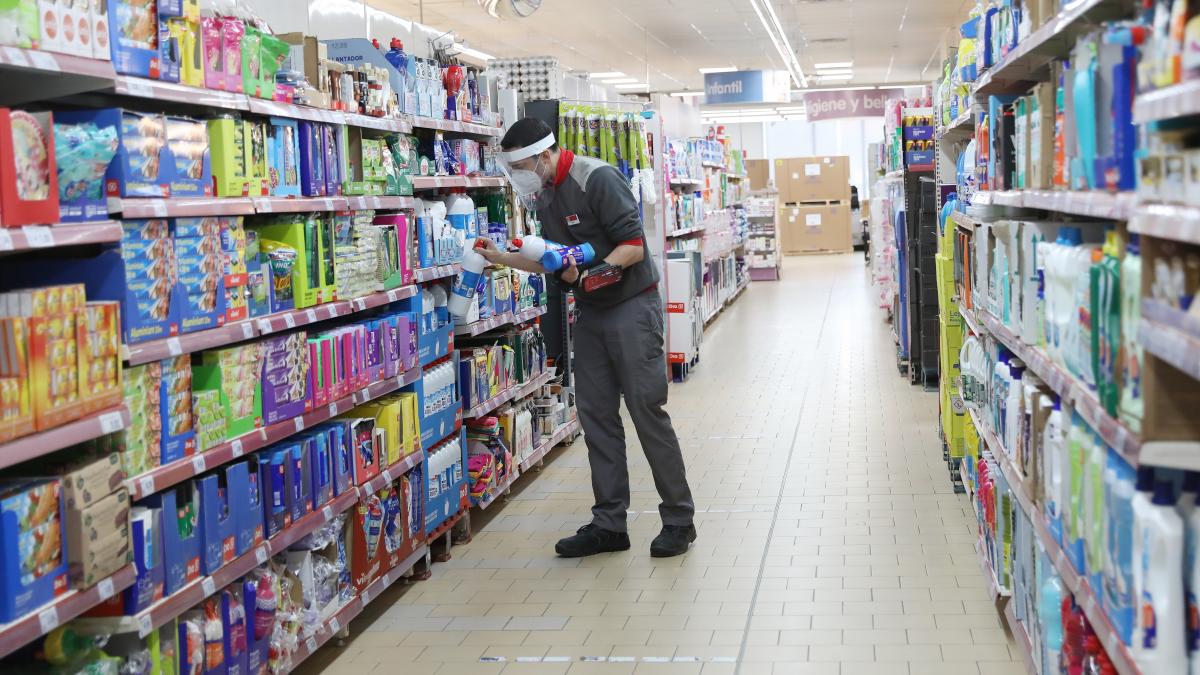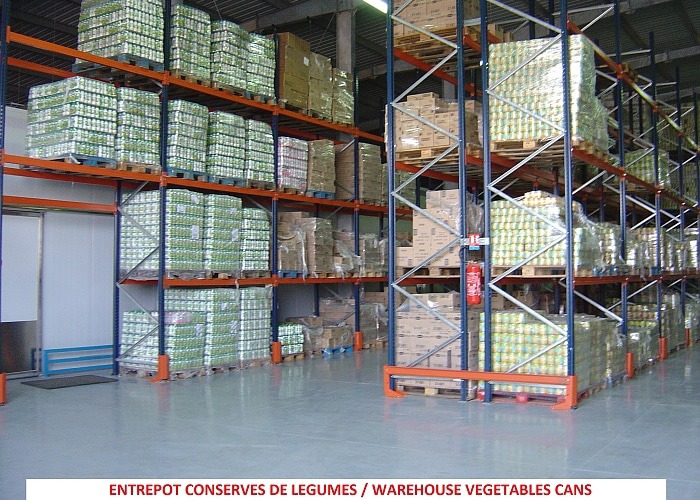
In the universe of a supermarket, every day is a well-orchestrated ballet of logistics and customer service. The article you are about to read takes you deep into the heart of this ballet by detailing the “typical stocking day” – a crucial downstream process from the delivery of products (at CABF, these can be Belle France products, national brands, or first price items) from the purchasing center that ensures the products are available, well presented, and fresh for the customers.
From morning preparation to closing the day, discover the various stages and tasks that characterize this typical day, as well as the crucial role of the management team in overseeing this complex and essential process.
Morning preparation
The management team, consisting of the department manager and their assistants, usually arrives very early in the morning, often around 6 am. This early arrival allows them to take advantage of the calm before the supermarket opens to focus on administrative and organizational tasks.
The first step in their day is to check internal communications. This can include reading emails, messages, and notifications on the supermarket’s internal management platform.
The aim is to quickly identify urgent issues that may have arisen during the night or the previous day. These can range from managing delivery delays, product quality issues, to last-minute changes in promotions or marketing campaigns.
Next, the management team consults the day’s schedule. This involves reviewing the planned tasks, checking employee schedules, and ensuring that all necessary resources are available for the day. The schedule may also include meetings with other department managers, suppliers, or supermarket management.
Receiving goods

Around 7 am, the supermarket begins to receive product deliveries. These deliveries can come from various suppliers and contain a variety of products, ranging from fresh food items to grocery items to household products.
The receiving team, often led by a receiving manager, oversees this crucial process. Their role is to ensure that each delivery matches the order placed in terms of quantity and quality. They check each product, comparing the received items with the invoice or the supplier’s delivery note. Any discrepancy is immediately reported for resolution.
In addition to checking quantity and quality, the receiving team is also responsible for managing expiration dates. They ensure that products with an upcoming expiration date are identified to be stocked first, following the “first in, first out” principle.
Once the products have been checked, they are stored in the supermarket warehouse. The receiving team organizes the products in a way that facilitates access and stock rotation. The products are usually sorted by category and by expiration date to facilitate future shelving.
This process of receiving and storing goods is essential for the efficient operation of the supermarket. It ensures that the products are available for shelving and helps prevent problems such as stock shortages or the sale of expired products
SHELVING PLANNING
Once all the goods have been received and stored appropriately, the management team turns to the task of planning the shelving. This step is crucial to ensure a smooth shopping experience for customers and efficient stock management for the supermarket.
Shelving planning involves deciding which products should be shelved first. Several factors come into play in this decision. One of the most important is the expiration date of the products. To minimize waste, products with a closer expiration date are usually shelved first, following the “first in, first out” principle.
Another important factor is the popularity of products. Products that are in high demand or currently on promotion are often shelved first to ensure they are available to customers from the supermarket’s opening.
Shelving planning also takes into account the layout of the store. The management team strives to place products in a way that facilitates customer navigation. For example, complementary products may be placed near each other to encourage cross-selling.
Finally, shelving planning must also consider available human resources. The management team needs to ensure that there is enough staff to carry out shelving efficiently and quickly, while complying with safety and quality standards.
SHELVING
Around 8 am, once shelving planning has been finalized, the shelving team begins to work. This team is composed of several employees whose main task is to fill the supermarket shelves with the products stored in the warehouse.
Under the careful supervision of the management team, the shelving team ensures that each product is properly placed and presented. This means not only placing the products in the right sections and shelves but also ensuring that price tags are clearly visible and that the products are arranged attractively. For example, fruits and vegetables can be arranged to create a colorful and appealing display, while promotional items can be placed in high-visibility spots.
In addition to product presentation, the shelving team is also responsible for the cleanliness and organization of the shelves. They ensure that the shelves are clean, without debris or spilled products. They also ensure that the shelves are well-organized, with similar products grouped together for easy customer navigation.
STOCK MANAGEMENT

Throughout the day, the management team plays an active role in monitoring stock levels in the supermarket. This task is essential to ensure a constant availability of products and to avoid stock shortages that could frustrate customers and result in lost sales.
Stock monitoring involves regularly checking the shelves to identify products that are running out. This can be done manually, by walking through the shelves, or using computerized stock management systems that can flag low stock levels. When a particular product’s stock levels are low, the management team places an order with the supplier to restock the product.
In addition to monitoring stock levels, the management team also ensures that expired or damaged products are removed from the shelves. Food products, in particular, have a limited shelf life and need to be sold or removed before their expiration date. Damaged products, on the other hand, can pose a safety risk to customers and must also be removed.
The management of expired or damaged products involves not only their removal from the shelves but also their disposal or return to the supplier, depending on the supermarket’s policies. In some cases, products close to their expiration date can be sold at a discount to encourage quick sales.
COORDINATION AND MEETINGS
The management team also participates in meetings with other department managers and supermarket management. They discuss problems, opportunities, and plans for the future.
CUSTOMER SERVICE
The management team is also available to help customers who have questions or problems. They strive to ensure a positive shopping experience for all customers.
CLOSING THE DAY
Towards the end of the day, the management team does a final round of the shelves to make sure everything is in order. They also prepare the task list for the following day.
END OF THE DAY
The management team usually leaves the supermarket around 6 pm, after checking that everything is in order and the evening team is ready to take over.
WHAT ARE THE EMPLOYEES WHO TAKE CARE OF THE SHELVING CALLED?
This is called the self-service employee. The shelf stocker, on the other hand, takes care of the shelf presentation.




